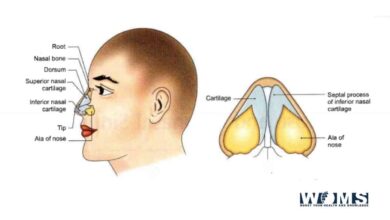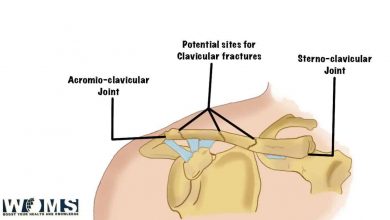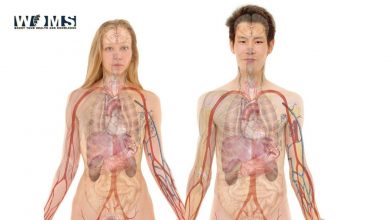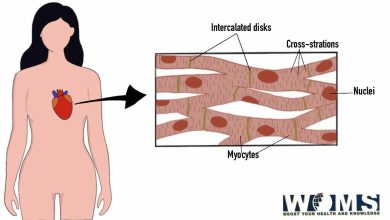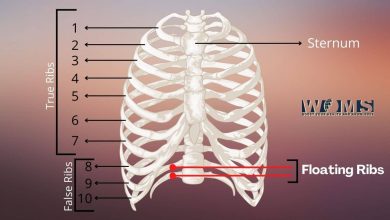12 Important Veins and Arteries Difference
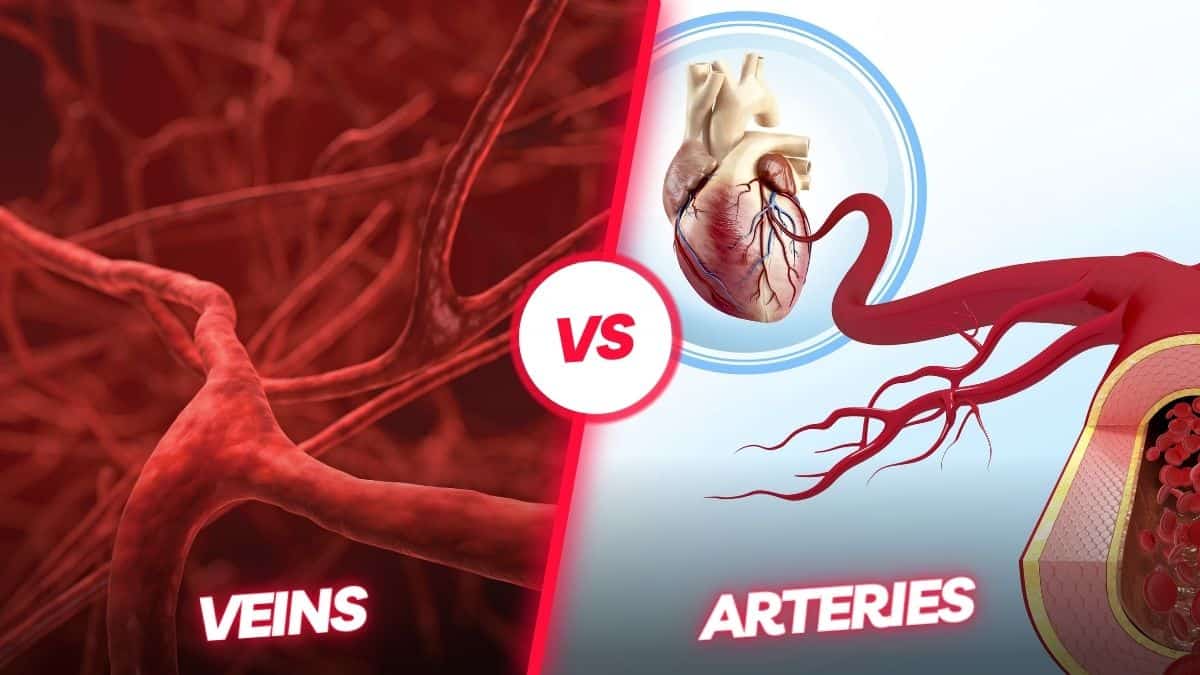
Most people consider that arteries and veins belong to the same categories. Whereas, most people question about the veins and arteries difference. There are considerable differences between the veins and arteries to learn and understand. These are the blood vessels that help to circulate blood throughout the body. They form a closed-end loop starting and ending at the heart. In this way, these vessels coordinate with each other to construct a cardiovascular system.
A human body consists of 60 thousand miles of blood vessels. There are mainly three types of blood vessels. These are as follows:
- Arteries
- Veins
- Capillaries
This article summarizes the key similarities and differences between arteries and veins. In addition, it will also help to learn the proper circulatory system transferring blood from one part of the body to the other parts. Let us take a deep dive into the veins and arteries difference to clear the basic concepts.
Cardiovascular system
Before we move in detail about the veins and arteries differences, we should have a general overview about the cardiovascular system. The cardiovascular system defines the network of blood vessels starting and ending with the heart. In addition, it helps to maintain a continuous and controlled transfer of blood. The blood provides oxygen and nutrients to every cell of the body. Every cell of the body relies on the blood supply to function properly. There are two main types of circulatory systems to deliver blood. These are as follows:
- Pulmonary circulation
- Systemic circulation
Pulmonary circulation:
Pulmonary circulation occurs when deoxygenated blood is delivered to the lungs through the pulmonary artery. Lungs make the deoxygenated blood to be oxygenated by providing oxygen and removing carbon dioxide. After this, the oxygenated blood is delivered to the left side of the heart to transport into the whole body. You may also be interested to know the anatomy of lungs.
Systemic Circulation
Systemic circulation occurs after pulmonary circulation. In this type, the oxygenated blood in the left side of the heart is delivered to the body through the aorta. This oxygenated blood provides oxygen and nutrition to the rest of the body.
What are arteries?
Arteries are the blood vessels that carry oxygenated blood from your heart and deliver it to the body. Once you know even the general knowledge about the arteries, you will be able to differentiate it from veins. This is all this article on veins and arteries differences deal with.
These blood vessels consist of thick walls and a firm muscular layer. In this way, it helps to keep the blood moving throughout the body. Arteries are wide enough to be declared as the largest blood vessel in the body. The aorta is the most prominent artery of the body to deliver oxygenated blood throughout every cell of the body. These arteries also provide small branches known as arterioles. Arteries and arterioles differ in size to maintain blood pressure. Do you know what is normal blood pressure?
What are the typical characteristics of arteries?
Arteries possess some typical features that make a difference from other blood vessels. These characteristics of arteries will assist you in knowing veins and arteries differences. These are as follows:
- The arteries lie more in-depth in the muscle.
- The arteries have relatively thicker walls than other blood vessels.
- Arteries carry the blood from the heart to different organs of the body.
- Arteries carry oxygenated blood except for the pulmonary artery.
- These arteries possess a thick layer of muscular tissue.
- These arteries have no valves other than pulmonary arteries.
What are veins?
Veins carry deoxygenated blood that is extracted from different organs of the body towards the right side of the heart. The blood is transferred from the right side of the heart toward the lungs to absorb more oxygen. This article on Veins of upper limb may be useful for you.
Veins carry almost 75% of the total blood that continues moving. The general information about veins is going to assist you in knowing veins and arteries differences.The most extensive veins are the inferior and superior vena cava. The superior vena cava takes blood from the upper part of the body toward the heart. Whereas, the inferior vena cava collects from the lower region of the heart.
Just like arteries, these veins also give off multiple branches to drain deoxygenated blood from every part of the body. Veins usually deliver blood against gravity to move blood toward your heart (upper) from the lower region. In addition, veins also possess valves to maintain blood flow. These valves are open for the blood that is moving upward but not for the blood flowing downwards. Now after knowing the characteristic features, we will look at the tabulated form of veins and arteries differences.
What are the characteristic features of veins?
Veins possess some peculiar features to differentiate from the arteries and other blood vessels. You may already have some knowing from these characteristics even before we present you the tabulated form of veins and arteries differences. These are as follows:
- The veins are usually present closer to the body’s surface
- These veins usually have thin walls.
- Veins carry blood from different body parts toward your heart.
- Veins carry deoxygenated blood.
- The veins contain a thin layer of muscle tissue from the inside.
- The vein holds valves to maintain a smooth blood flow towards the heart.
What is the anatomy of arteries and veins?
Arteries and veins both possess three main layers. These are almost of the same type but there are slight variations that we will mention in the article later. The anatomy of arteries and veins is also important in knowing the veins and arteries differences. These three main layers are as follows:
Tunica adventitia
The outer layer of blood vessels is made up of collagen and elastin known as tunica adventitia. It helps in the expansion and contraction of the vessel depending on the type of blood vessel (vein or artery). It is an important feature to control blood pressure.
Tunica media
As the name indicates, it is the central layer of a blood vessel. Muscle fibers and elastin are the key ingredients of this layer. Check out the diagram of muscle fiber. The amount of muscle fiber and elastin varies according to the type of blood vessel.
As an example, elastic arteries possess fewer muscle fibers in the tunica media layer.
Tunica intima
This layer indicates the innermost layer of any blood vessel. It contains elastic structures and tissues and may contain valves to move blood in the proper direction. Let’s now look at the 12 major veins and arteries differences.
What are the main differences between arteries and veins?
There are clear differences between arteries and veins. Let us have a look at veins and arteries differences to know in detail.
| Physiological aspects: | Arteries: | Veins: |
| Functions: | Arteries carry oxygenated blood throughout the body except for the pulmonary arteries. | Veins drain deoxygenated blood from the body towards the heart except for the pulmonary vein. |
| Position: | Arteries are located deep within the body layers. | Veins are present near to the surface of the body or closer to the skin. |
| Appearance: | Arteries are usually red in color. | Veins are usually blue in color |
| Walls: | Arteries consist of three main layers that are quite thick, rigid, and also muscular. | Veins are also made up of three layers that are thinner and less muscular as compared to the arteries. |
| Transportation: | Arteries take blood from the heart and deliver it away from the heart. | Veins carry blood from the body organs and move it towards the heart. |
| Rate of pressure: | Arteries possess high blood pressure because the blood moves by the pumping pressure of the heart. | Veins contain quite low blood pressure as the blood usually moves by the capillary action of the veins. |
| Oxygen saturation: | Arteries contain relatively higher oxygen levels. | Veins are usually low in oxygen level. |
| Carbon dioxide level: | They contain lower carbon dioxide. | They contain high levels of carbon dioxide. |
| Blood flow direction: | Blood moves in a downward direction from the heart towards the body tissues. | Blood moves against the gravity from the lower region towards the heart. |
| Valves: | No valves are present in arteries. | Veins contain valves to maintain the blood flow. |
| Lumen: | There is a narrow lumen due to increased muscular layer. | The lumen of veins is wide due to thin muscular layers. |
| Disorders: | Arteries are prone to greater disorders like arteriosclerosis, angina pectoris, etc | Veins are less prone to diseases just like varicose veins. |
We recommend you to try Auscultation world, one of our most loved applications that enables you to hear various heart sounds, lung sounds as well as bowel sounds. You can also visit vein clinic in Orlando if you face any vein issue.
Conclusion:
The cardiovascular system is a proper network of blood vessels containing arteries and veins. These blood vessels carry blood from one part and deliver it to the other part of the body. There are several differences between the arteries and veins in the context of blood transfer. Arteries carry oxygenated blood whereas veins collect deoxygenated blood. This article is all about the major veins and arteries difference concerning the anatomy or other main functions.
Frequently asked questions (FAQs)
How are arteries and veins connected?
Arteries and veins are somehow connected to each other through a variety of tiny blood vessels. These blood vessels are known as capillaries.
Why are arteries thicker than veins?
Arteries possess high blood pressure because of the pumping pressure of the heart. In addition, the walls of arteries are much thicker to endure the pressure delivered by the heart.
